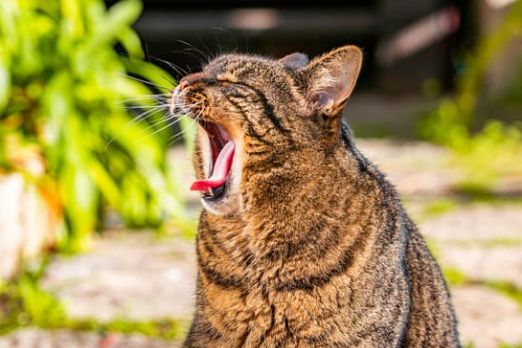Does your cat go wild for fish? Same here. One sniff from the kitchen and our little sea-foodie is already parked by the bowl, tail doing the happy dance. But beyond the irresistible smell, what does fish really bring to the table for your cat?
Why fish can be a great addition to your cat’s diet
Fish is rich in complete, highly digestible proteins that help maintain muscle, support tissue repair and fuel playful zoomies. It also delivers key omega-3 fatty acids (EPA and DHA) that cats can’t synthesize efficiently on their own.
Those omegas support skin health, soothe inflammation and can help keep the coat soft and glossy. Think of fish as a nutritious topper or occasional meal component, not a full replacement for complete cat food.
Curious about the basics of a balanced feline bowl? Explore what cats should really eat in this handy guide: what cats should really eat.
Omega-3s and vision: small nutrients, big impact
DHA, an omega-3 found in fatty fish, plays a role in eye and brain function. While your cat’s night vision is naturally impressive, good nutrition helps keep those peepers in top form.
Great choices include sardines, mackerel and salmon. Prefer smaller oily fish more often (they generally contain less mercury), served cooked, plain and deboned.
Want to dive deeper into feline sight? This explainer on how cats see the world is a fun read: how cats see.
Hydration boost and a shinier coat
Many cats aren’t big drinkers, so moisture-rich foods help. Freshly cooked fish contains water that can support hydration, while omega-3s nourish the skin barrier for a softer, shinier coat.
If your cat’s fur looks a bit dull or flaky, a tiny, well-chosen fish topper (see the tip below) may help. Always introduce new foods slowly.
For an everyday feeding routine that actually works with picky eaters, check these gentle, practical tips: our advice on feeding your cat.
How to serve fish safely
- Cook it thoroughly (steam, bake or poach). No raw fish.
- Keep it plain: no salt, garlic, onion, butter, spices or sauces.
- Remove all bones and skin. Serve bite-sized pieces.
- Offer small portions as a topper once or twice a week.
- Rotate proteins to keep the overall diet balanced.
A practical, fuss-free tip
Steam a small salmon fillet, let it cool and cut into pea-sized cubes. Freeze flat on a tray, then store in a bag. Pop out 3–4 cubes to thaw and use as a topper—perfect portion control, no waste, and your cat will think you’ve opened a five-star seafood bar.
A common mistake to avoid
Relying on tuna-only meals. Plain tuna (especially in oil or brine) isn’t complete and can skew nutrients; frequent large portions may also raise mercury concerns. Keep tuna as an occasional treat, choose spring-water versions, rinse gently and serve tiny amounts alongside complete food.
A surprising cat fact
Unlike us, cats don’t make vitamin D from sunshine; they get it from their diet. Quality complete foods cover this, and fish can contribute—just remember it’s a complement, not the whole menu.
Which fish are safer—and which to limit?
- Good choices (cooked, plain): sardines, salmon, trout, mackerel (small), pollock, hake.
- Limit: tuna, swordfish and other large predatory fish due to potential mercury accumulation.
- Avoid: smoked, cured, heavily seasoned or breaded fish.
Raw fish? Best skipped
Raw fish can carry parasites and bacteria, and some raw fish contain enzymes that may interfere with vitamins. Cooking makes it safer, gentler on the tummy and easier to portion correctly.
If your cat shows signs of tummy upset after new foods, this guide can help you troubleshoot: why cats vomit.
How much and how often?
As a general idea, a teaspoon to a tablespoon of cooked fish as a topper once or twice weekly suits many adult cats. Kittens and cats with medical conditions need tailored advice—when in doubt, ask your veterinarian.
- Introduce gradually over 3–4 days.
- Watch for GI signs (vomiting, diarrhea), itching or ear trouble.
- Keep total treats (including fish) under 10% of daily calories.
Quick recap
- Protein and omega-3s make fish a tasty, functional bonus for many cats.
- Serve it cooked, plain and in small portions, with bones removed.
- Choose smaller oily fish more often; limit tuna and skip smoked/seasoned options.
- Fish is a complement—your cat still needs a complete, balanced diet.
FAQ
Can cats eat tuna?
Yes, in tiny amounts and not too often. Choose tuna in spring water, rinse lightly and serve as a topper alongside complete food to avoid nutrient imbalances.
Is raw fish safe for cats?
Raw fish is not recommended due to parasites, bacteria and potential enzyme issues. Cooked, plain fish is the safer choice.
What fish is best for cats?
Sardines, salmon and small mackerel are great options when cooked and deboned. They’re rich in omega-3s and generally lower in mercury than large predatory fish.
How much fish can I give my cat per week?
For most healthy adults, a small topper (about 1–3 teaspoons total per week) is plenty. Adjust to your cat’s size and diet, and consult your vet for personalized advice.







